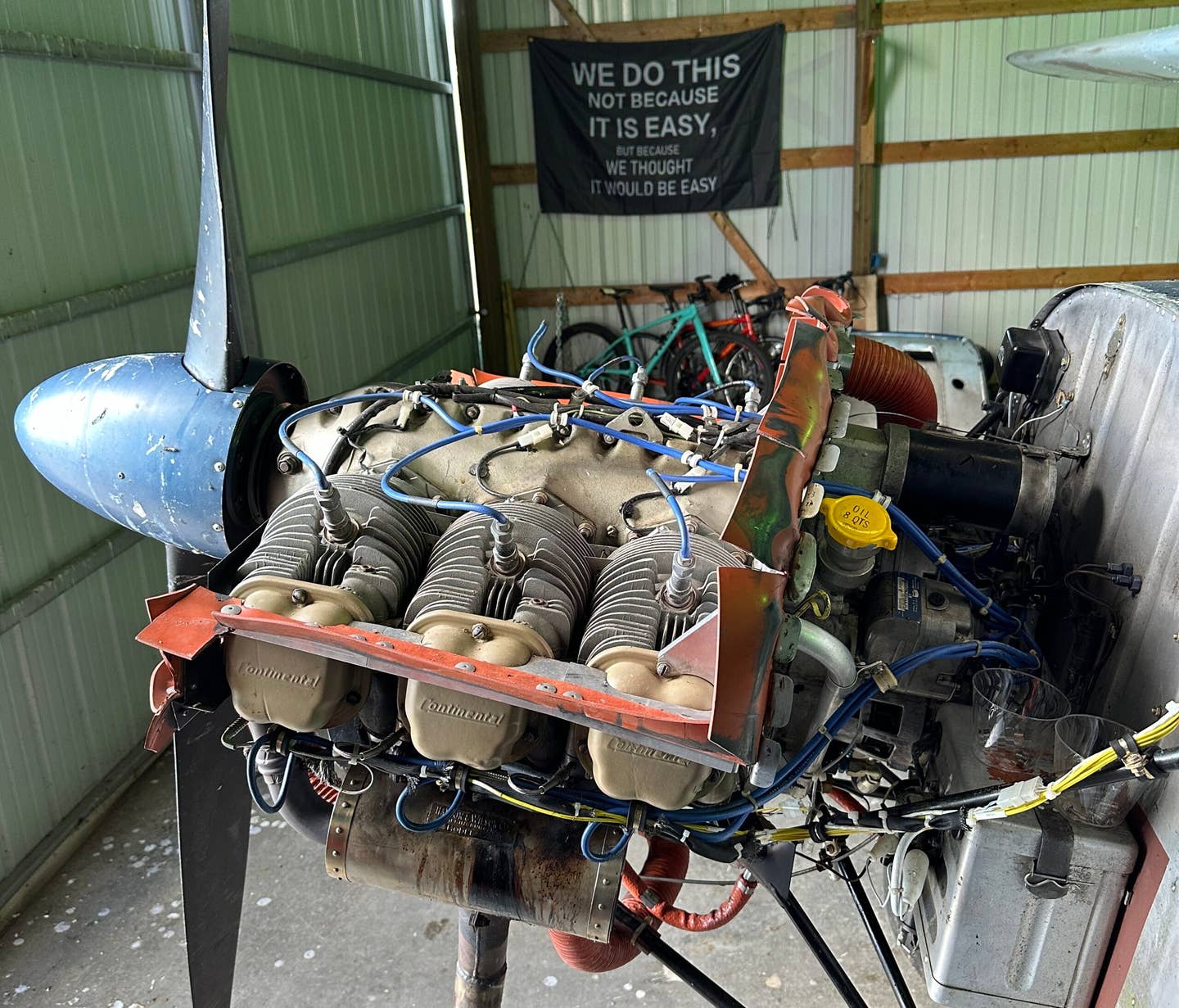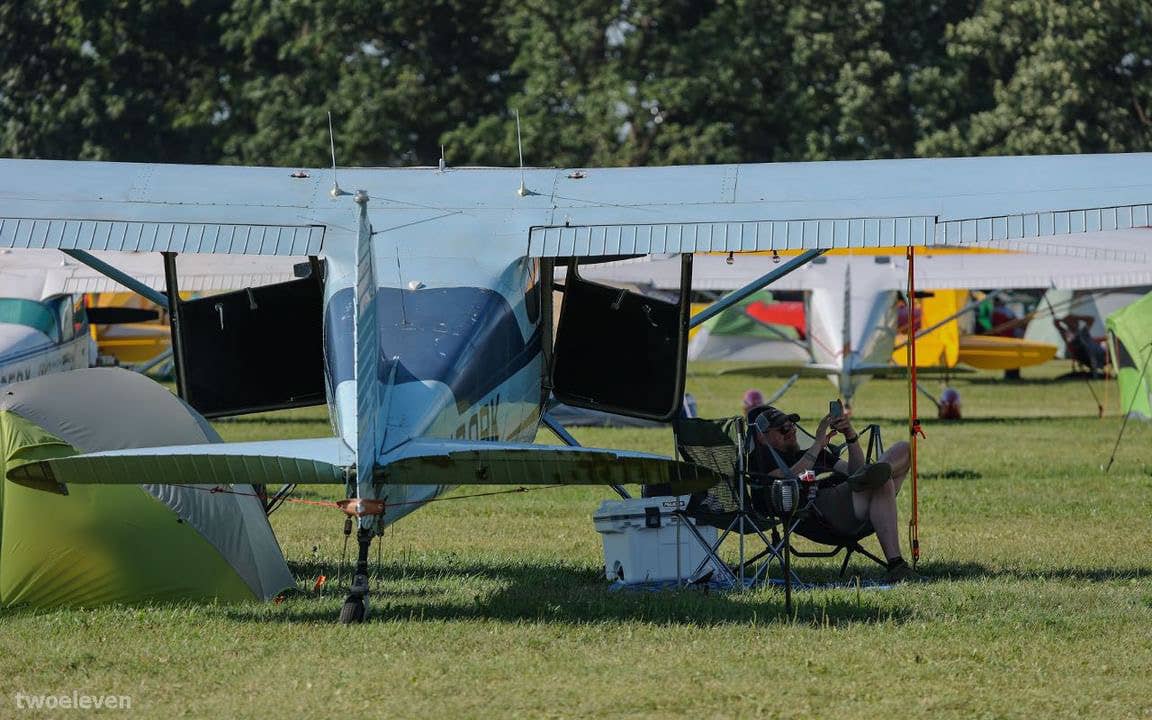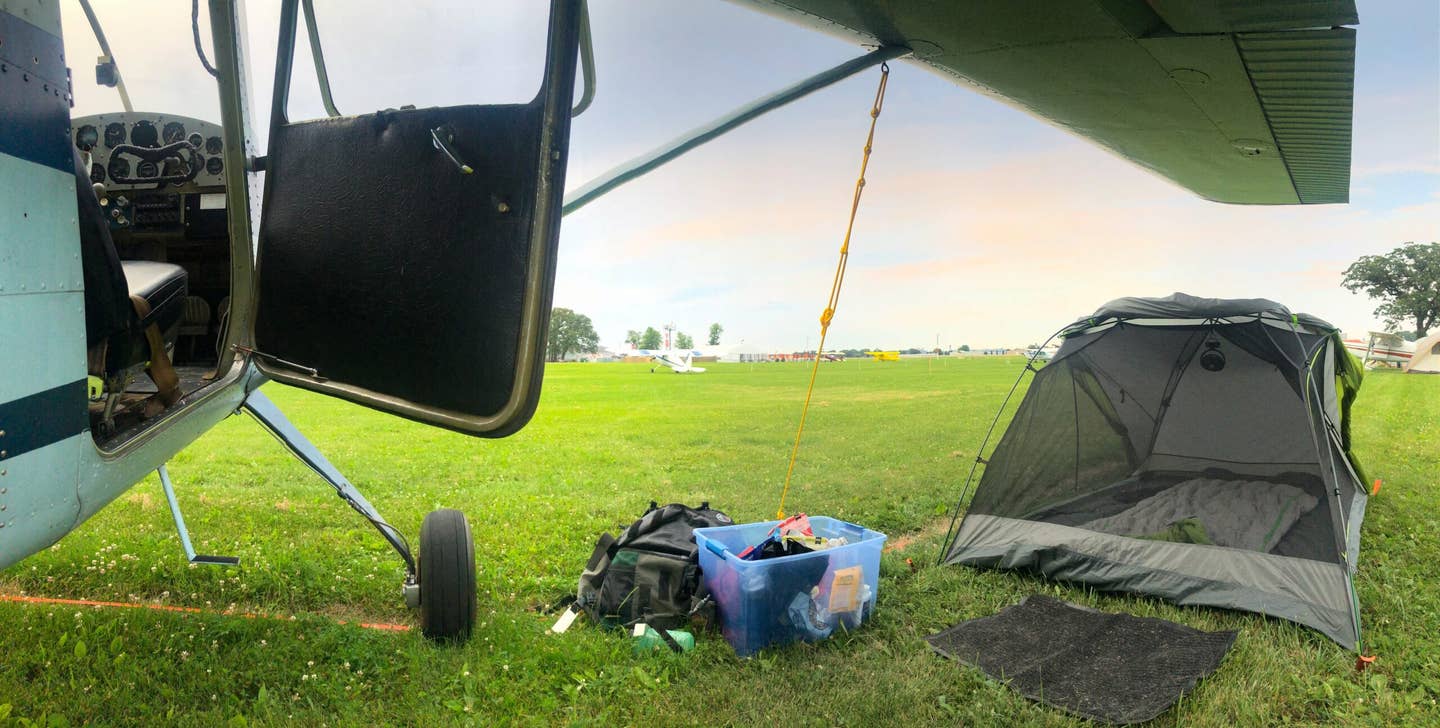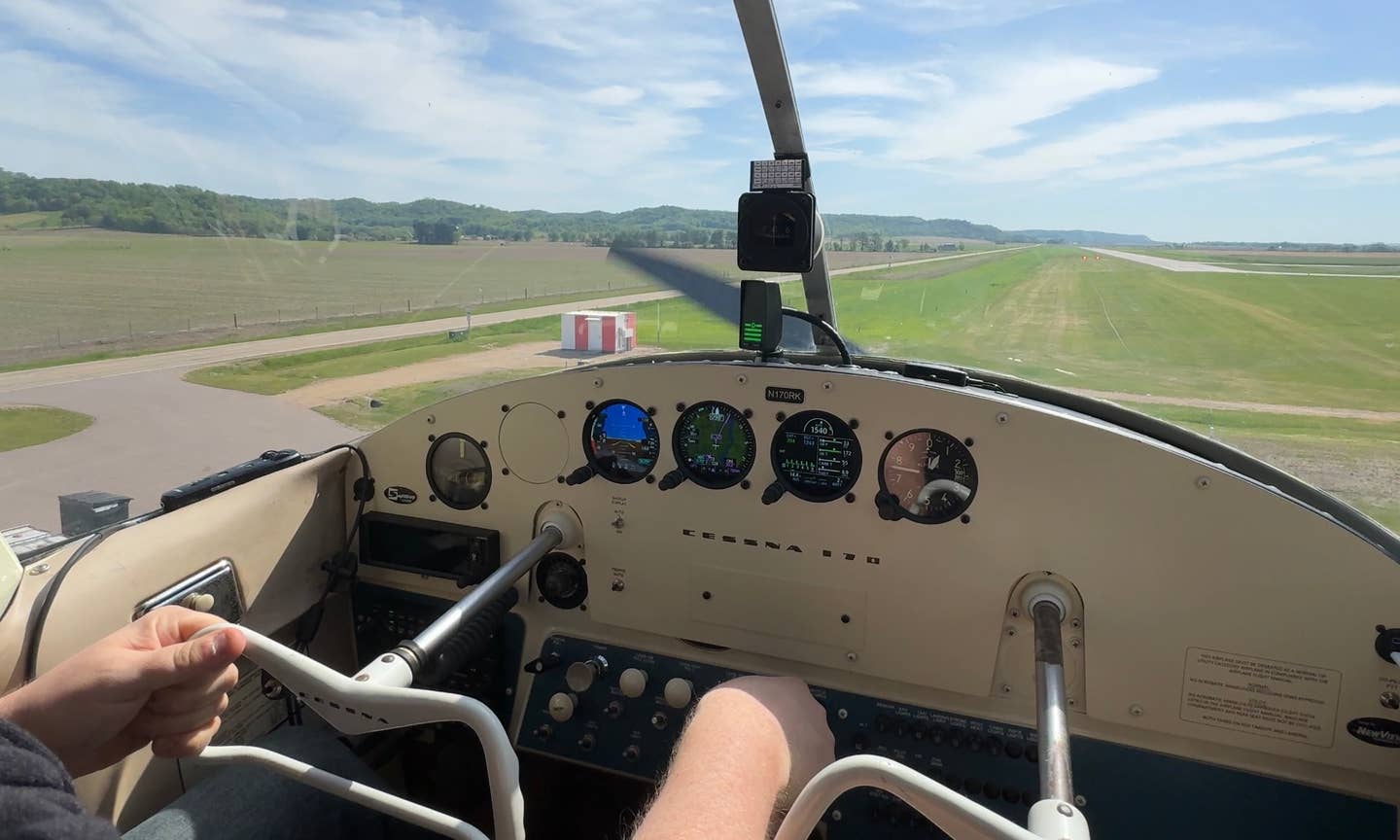House Hunting As a First-Time Airplane Owner
An increasing number of airpark homes appear to be transitioning to non-pilot owners with no intention of using their hangar for its intended purpose.

A rare sight—a private airpark with relatively modest homes. [Credit: Jason McDowell]
Somewhere along the way, a decision was apparently made that anyone interested in purchasing a home at an airpark in the upper midwest must have 8 to 12 children, multiple airplanes, and a seven-figure salary. This is based on my observations as I shop for a home for the first time as an aircraft owner. If one wants to live in a house with a hangar and runway access, a sprawling “McMansion” is pretty much the only arrangement available.
As a single guy with no kids, relatively few possessions, and a writer’s salary, this poses a problem. Having always pursued a frugal and simple lifestyle (minus the airplane), I neither need nor want 6,000 square feet of living space, an in-ground pool, or several acres of land to maintain. Instead, my daydreams typically revolve around a 600- to 800-square-foot, two-bedroom cabin and a basic T-hangar on a small parcel of land.
Last summer, I came close to finding such a property. Through word of mouth, I learned that a resident was planning to move out of a basic three-bedroom, 1,300-square-foot ranch on a beautiful 2,500-foot grass runway. The house was reportedly in pretty rough shape, and I salivated at the idea of finally finding an airpark property within financial reach.
I arranged to meet a relative of the owner at the house to check it out. The hangar was fairly sparse, with a homemade, manually-cranked overhead door that did not provide a weather-tight seal. But it was a hangar, and it would shelter an airplane from the elements reasonably well. And really, who could complain about a hangar that’s a literal stone’s throw from one’s living room?
The house, on the other hand, was indeed quite rough. Although the roof had recently been reshingled, some sections had been exposed to the elements for years, and the condition of the rafters beneath was unknown. Several windows had shifted in their deteriorating wooden framing to reveal the blue sky beyond. All flooring and appliances were in need of replacement, as well. The house would require a full renovation, and despite being offered at a price I could just barely afford, I’d have no funds left over to make the necessary repairs and updates.
As we walked through the property, the owner’s relative told stories from the airpark’s glory days, back when it was home to a vibrant community that socialized and flew together regularly. On any given Friday or Saturday evening, one simply took a walk along the grass runway until they came upon that evening’s group dinner venue, identifiable by an open hangar door and the sound of Jimmy Buffet wafting through the barbeque smoke and fireflies.
Today, only two of the 12 hangars on the airpark contain an airplane. The rest, owned by non-pilots, contain boats and ATVs. It was sad to see what the airpark had become, and envisioning the Tom Hanks movie, Money Pit, it was sad to accept that this home and renovation were beyond my means. I passed on the opportunity with regret.
Months later, when the home had been completely renovated, it sold for well above my price range. It was becoming evident that my fantasy of finding a modest cabin at an airpark was pure fantasy, at least in the Great Lakes region. With that, I abandoned my airpark fantasy, recalibrated my plans, and set my sights on finding a regular home within a short drive of a nice airport.
Buying a home out of state while simultaneously searching for a nearby hangar comes with its own challenges. One must search for homes within a reasonable driving distance of an airport. One must also ensure the prospective homes aren’t near just any airport, but rather one with decent hangars and also with hangar vacancies. It occurred to me that this is perhaps not unlike parents having to search for a new home based on preferred school districts.
I knew hangars were in short supply at my preferred airport, and I added myself to their waiting list last fall. And because I’m number 38 on the waiting list and will be waiting for several years, I decided to hedge my bets and placed myself on the waiting lists at five other airports in the region. There is, after all, no downside to placing oneself on a waiting list—in most cases, you are allowed to decline a hangar with no penalty when your name finally comes up. I figured I might as well get in line early so I have more options down the road.
In the meantime, I’ve spent time overanalyzing the situation as I would with any major purchase. I’ve created actual diagrams depicting drive time radii from each airport to help determine where to search for homes, and I’ve set up enough Zillow alerts to ensure their servers perpetually glow orange from the strain. And I simultaneously sift through classified ads in the event an individual T-hangar becomes available somewhere.
Armed with a renewed strategy and a set of priorities vastly different from that of any normal home shopper, I continue my hunt. With any luck, the elusive combination of a great airport, an available hangar, and a decent home will reveal itself. Until then, I scour real estate listings and wait for my name to come up on one of the hangar wait lists—all while still keeping an eye out for my white whale, blue-collar airpark property.

Subscribe to Our Newsletter
Get the latest FLYING stories delivered directly to your inbox






